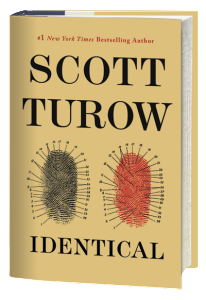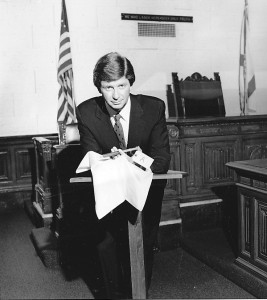By Paul Levine
Did anyone ever ask Herman Melville which was a better book, “Moby-Dick” or “Billy Budd, Sailor?”
No, I’m not comparing myself with Melville. For one thing, he had a big, bushy beard. For another, I get seasick.
Still, I’m always fascinated when readers ask, “What’s the best book you’ve written?”
(Sticklers will likely say that no one asked Melville that question because “Billy Budd” was unfinished at his death and not published for another 30 years, but you get my point).

When asked about my best novels or favorite novels, I usually give a smart-ass reply. “Who’s your favorite child?” That either gets a laugh or a promise never to buy another of my books. So today, I’m going to be serious and talk about the issue of best novels versus favorite novels.
First, disregarding the question about my own work, I have lots of “favorites,” including “To Kill a Mockingbird,” “The Sun Also Rises,” “Rabbit, Run,” “Bonfire of the Vanities,” “The Grapes of Wrath,” “The Big Sleep,” “Sophie’s Choice,” “Presumed Innocent,” and a bunch of others I can’t remember off the top of my head. Are they the best novels I’ve read? I can’t say. But they’ve stayed with me…in some cases for more than 40 years.

What Are the Best Novels of All Time?
Now, what about the best novels of all time? Oh, there are lots of lists. The Modern Library names 100, with James Joyce’s “Ulysses” – the bane of students everywhere – at the top. Library readers have their own list, naming Ayn Rand’s “Atlas Shrugged” as the greatest novel of all time. So much for popular taste! (I might complain that “Don Quixote,” “Gulliver’s Travels” and “David Copperfield” aren’t on the list, but this is the “Modern Library.”)
My point is this. No survey of readers or poll of academics can choose the “best” novel, any more than they can select the best pizza in town. It’s all personal. You may love Margaret Mitchell’s iconic melodrama, “Gone With the Wind” (number 24 on the reader’s list), while I prefer Vladimir Nabokov’s satiric comedy “Lolita,” (number 4 on the board’s list). Neither of us is right or wrong.
I apply the same reasoning to literary prizes. Many years ago, on a self-improvement kick, I decided to read every novel that won the Pulitzer Prize for fiction since 1980.
Are the Pulitzer winners of the 1980’s the Best Novels of the Decade?
Here’s the list:
“The Executioner’s Song” by Norman Mailer
“A Confederacy of Dunces” by John Kennedy Toole
“Rabbit Is Rich” by John Updike
“The Color Purple” by Alice Walker
“Ironweed” by William Kennedy
“Foreign Affairs” by Alison Lurie
“Lonesome Dove” by Larry McMurtry
“A Summons to Memphis” by Peter Taylor
“Beloved” by Toni Morrison
“Breathing Lessons” by Anne Tyler

Who can dispute the quality of these books? At the same time, we might ask what made “The Executioner’s Song” better than Philip Roth’s “The Ghost Writer,” nominated the same year. Or “Lonesome Dove” better than Russell Banks’ “Continental Drift,” also a finalist. The answer is that the Pulitzer Committee says so. The choices are, by necessity, subjective. Bluntly stated, the Pulitzer winners aren’t the “best” novels of the year. They’re simply the committee members’ “favorites.”
There’s even an entry for “great American novel” in Wikipedia, which defines the term as:
“[T]he concept of a novel that is distinguished in both craft and theme as being the most accurate representation of the spirit of the age in the United States at the time of its writing or in the time it is set. It is presumed to be written by an American author who is knowledgeable about the state, culture, and perspective of the common American citizen.”
And yes, Wikipedia lists “Moby-Dick” as one of the great American novels.
So back to my original question. Which novel of mine is my favorite? The answer may surprise long-time readers and friends. Most expect me to name “To Speak for the Dead,” the first of the Jake Lassiter series. Or “Solomon vs. Lord,” the first of that series. But my favorite is “Illegal,” a tale of human smuggling, loosely based on a true story. The plot involves a harrowing midnight crossing of the Mexican/U.S. border, a child separated from his mother, and a down-and-out lawyer’s attempt to reunite the pair after the mother is held against her will as a sexually abused migrant laborer. Unlike my hard-boiled legal thrillers or my lighter capers involving bantering lawyers, there’s more meat on these bones. I like to think that “Illegal” delivers an empathetic, layered story with strong thematic material that was treated seriously by the critics. I don’t know if it’s my best work, but it’s my favorite…for now.















